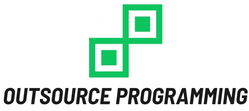Outsourcing has become a powerful strategy for businesses looking to enhance efficiency and cut costs. By tapping into global talent, companies can focus on their core competencies while benefiting from specialized skills elsewhere. However, successful outsourcing is not just about finding the right partner; it hinges on effective collaboration.
In an increasingly digital world, secure communication is paramount. As teams work across borders and time zones, ensuring that sensitive information remains protected becomes essential. With the right tools at your disposal, you can foster teamwork without compromising security or productivity. Let’s explore how secure collaboration tools can transform your outsourcing experience and keep your projects running smoothly.
Challenges of Collaboration in Outsourcing
Collaboration in outsourcing can be a double-edged sword. While it offers access to global talent, it also presents distinct challenges.
Time zone differences often create hurdles. Teams may struggle to find overlapping hours for meetings, leading to delays in decision-making.
Cultural disparities can complicate communication as well. Misunderstandings arise from different business practices and social norms, potentially impacting project outcomes.
Additionally, varying levels of technology proficiency among team members may hinder efficiency. Not everyone is equally comfortable with digital tools or platforms, slowing progress.
Security concerns are paramount too. Sensitive information shared across borders raises the risk of data breaches and intellectual property theft.
Establishing trust takes time and effort when teams are not physically present together. Building rapport remotely requires intentional strategies that some might overlook at first glance.
Benefits of Using Secure Collaboration Tools
Secure collaboration tools offer enhanced data protection. They encrypt sensitive information, ensuring that only authorized team members can access critical documents. This is vital in maintaining client confidentiality and intellectual property.
In addition to security, these tools streamline communication. Real-time messaging and video conferencing capabilities foster quicker decision-making. Teams can collaborate seamlessly, regardless of their geographical locations.
Moreover, many secure collaboration platforms come with integrated project management features. Task assignments, deadlines, and progress tracking all become centralized within one tool. This boosts productivity and accountability among team members.
User-friendly interfaces are another advantage. These systems are designed for ease of use, minimizing the learning curve for new users. With intuitive navigation, teams can focus more on their projects rather than struggling with technology issues.
Compliance becomes simpler with secure collaboration tools. Many adhere to industry standards like GDPR or HIPAA automatically updating policies as regulations evolve.
Tips for Implementing Secure Collaboration in Outsourcing
Establish clear communication protocols from the start. Define how and when team members will interact. This prevents misunderstandings and keeps everyone aligned.
Next, prioritize access control. Only grant permissions to those who need them for their tasks. This minimizes risk and ensures sensitive information stays protected.
Regularly update software tools to keep security features current. Outdated systems can expose vulnerabilities that hackers exploit.
Training is essential too. Provide education on best practices in data handling and cybersecurity measures for all team members involved in outsourcing projects.
Encourage a culture of transparency within teams. Open dialogues about potential concerns foster trust and enhance collaboration efforts while maintaining security standards.
Conclusion
Navigating the world of outsourcing can be complex, but secure collaboration tools make it a lot easier. With the right technology in place, businesses can enjoy smoother communication and enhanced productivity. By addressing common challenges head-on, these tools foster trust and efficiency among teams spread across different locations.
The benefits are clear: improved security for sensitive data, streamlined workflows, and stronger team dynamics. As you explore your options, remember that choosing the right tool is only part of the equation. Effective implementation and fostering a collaborative culture are equally important to maximize potential.
As you move forward with your outsourcing strategies, consider investing time into finding solutions that fit your specific needs. The landscape of remote work continues to evolve; staying ahead means embracing innovation while prioritizing security in every interaction.


Leave A Comment Cancel reply